“A Skyscraper isn’t Pakistan” – Interview with photographer Manolo Ty by Saima Jawed
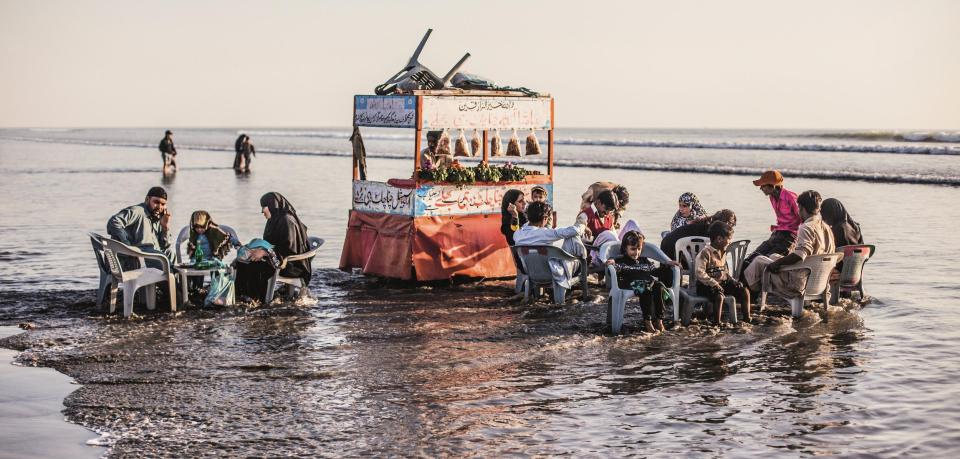
How do you like Pakistan?
It’s very interesting. It’s a very diverse country, it’s very different from what I’ve seen before. When I came here, I had very different expectations. I guess I just didn’t know much about it. So when I came here, a lot of stereotypes vanished. And I loved that. In the so-called West, the only place where you hear anything about Pakistan is in the news, and normally these reports are not positive. They are always related to war or terrorism. I think it is important that people also see the other side.
Well, I think that is what you managed to do with your photos – to show people that ‘other side’. But let’s go back a little first. Did you always want to be a photographer?
No, I always wanted to be a film director. I was working in the film industry, had several jobs there. And of course doing that, you always have a visual approach to things. So when I started travelling I took a digital camera with me and started taking photographs. Just for myself. I never thought about photography as a profession. But while I was travelling I got offers like photographing the Tiananmen square in China and so on, and then someone asked me to show my photos in an exhibition … That was the fist time that I realized, oh, this is also a profession! So I got into it gradually, to see it as a job. I never had that plan in my head that I want to become a photographer. It just happened.
That’s always the best, isn’t it? On your website you said that you wanted to get away from the ‘grey monotony’ of your hometown Hagen, one of the most ugliest German cities it seems …
(laughs) Yeah, that’s probably true.
… and you said it was not easy growing up there, so you took martial arts as a kind of salvation – and that it was this critical time period in your life that sparked your love for photography. Can you tell us more about that?
Yes, that’s pretty much how I felt. I wanted to leave that place behind, I didn’t like it there very much. It really was very grey. I wanted to travel, and when I finally did that, I wanted to keep the memory, because I didn’t believe that I could do this my whole life. Now I know that I can actually! But at this point I was like: Okay, I need to preserve those memories, I have to create a kind of visual archive, so that’s how photography came in. More like an external memory for myself, like keeping a diary. That was the start of my photographic journey. Like I said before, I never thought that photography is actually a job. I knew that making movies is a job, and I loved it and loved to watch movies, but then at some point I realized it’s really nice to tell a story with a photo, in one frame. It’s actually much more challenging. So I tried to get better at this. What I really like about it is that you normally watch a movie once, and that’s it. But a photo, you get back to it – you can look at it again and again, and that is exactly what you do when it is for instance hanging at your wall. That is a different quality, I really like that.
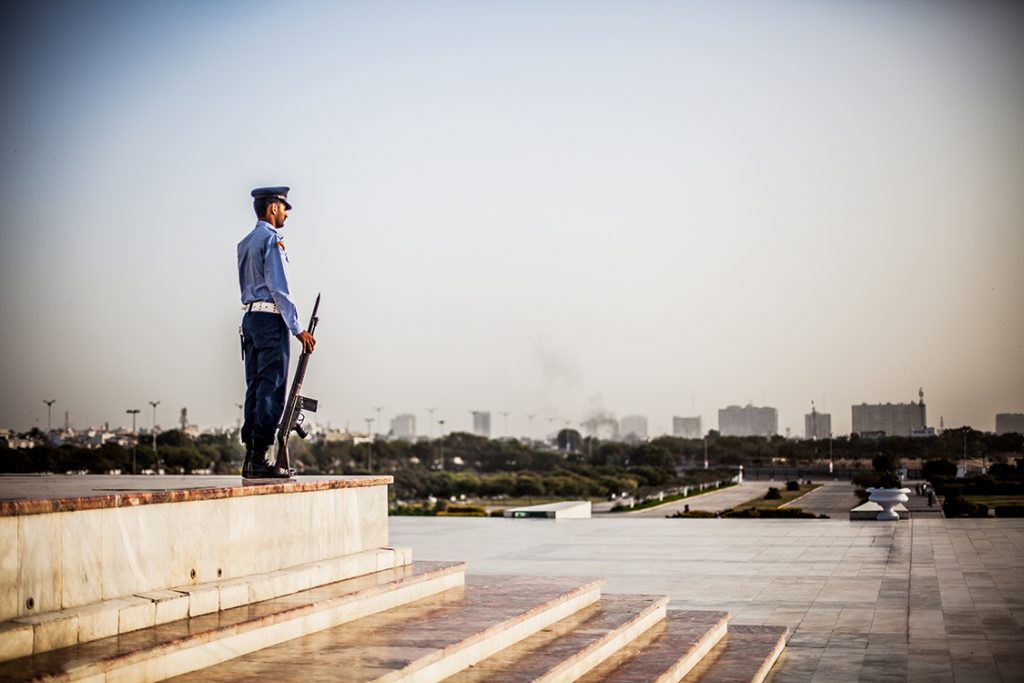
During the conversation with Bina Shah at the Goethe-Institut today, you made a statement that I found remarkable. You narrated a story about a trip that became a turning point in your life, when you decided to dedicate your life to the arts and to photography. Let me quote it: “Since then, I have woken up every morning with a smile on my face.”
Well, I smiled before, but what I wanted to say with it, is this: I found my passion. I made my passion my job. And I think this is something that a lot of people want for their lives, but only some of them can achieve that. It is a very privileged position. Just take a look at Facebook on a Monday, where everybody goes ‘Aaah, I hate Mondays!’ Well, I don’t – not anymore. For me, it doesn’t matter if it’s Sunday or Saturday or Monday. Every day I am doing what I love. Also, I don’t have normal working hours. I work whenever I want. So this is what I meant. I am a happy person because I do what I want – and I get paid for it.
Tell us about that incident when your passport got stolen. It seems that this situation became a catalyst for your dedication to arts, is that true?
It is. After my passport got stolen, I somehow ended up on a sailing boat. And I had a lot of time on that boat, you know, time to think, to contemplate. In my old life I had studied Economics, and I had worked as a hotel manager for five star luxury hotels, my life was quite busy, dominated by deadlines and completely structured – and all of a sudden I find myself on that boat, you know, with all that time at my hand … And I realized that travelling, meeting people, taking photographs, that this is what I really want to do all my life. I realized that what I really want is following up with the arts and photography, that I wanted to make this my profession. I had no idea at all whether it would work out of course, but I was willing to take that risk. I thought if I don’t try it, I may one day look back at my life and regret it. But if you try and it doesn’t work, that’s fine, you know. So that is my kind of philosophy. But not even trying, I don’t think that is an option. At least not for me.
When I talked to Danial (Shah) a few minutes ago and asked him about your work, he said you have the approach of a documentary filmmaker. It looks as if you familiarize with the people, so you become kind of invisible to them and then you are capable of taking these very intimate photographs. Would you agree? And have you ever thought about making a documentary movie?
It’s funny you are asking that, because that is actually what I am doing right now. It comes back full circle to filmmaking, because I’m now doing a documentary on transgender in Pakistan. The UNDP asked me to do this movie, but I was working on another documentary movie here as well … It’s kind of interesting that it went this way. Working on those documentaries, I realized that I am actually more of a photographer than a filmmaker now. It has become my medium, photography. But I never stopped wanting to make films. Also, they have so much in common, both are about creating images.
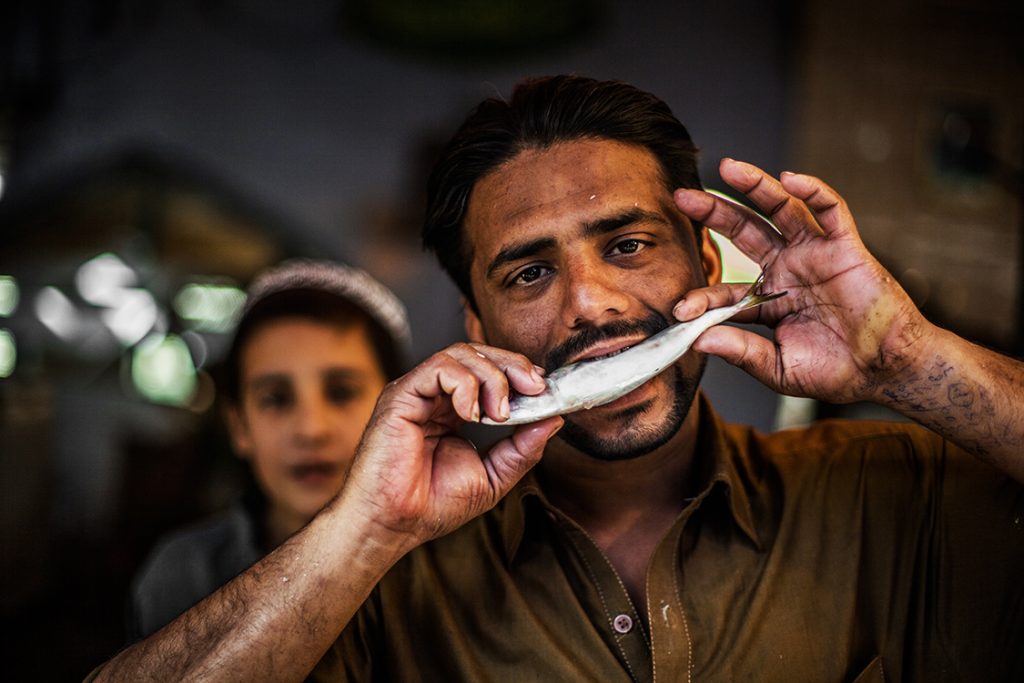
In some of your photographs like the one you took at Empress market, this guy with the fish, people are looking into the camera. Did you ask them to pose like that?
No, I don’t like that. I never ask people to pose for the camera. So how I am doing it is like that: First I just start taking pictures, to get acquainted with the people, you know. I ask them if they’re okay with me taking photos of them, and the first thing that happens normally is that they stand really still and act very unnatural. So I’m taking that photo, but I already know, this picture will never see the light of day so to say. So after that they continue to do their stuff, and I ask them ‘Do you mind if I stay here a little?’, and most of them say, ‘No, it’s fine.’ And that’s when my real work starts. So they are either still in a conversation with me or they have continued to do what they do, and sometimes they only look into the camera because they’re talking to me. But they become more relaxed after that first official picture, you know. So I just click another one, and another one, or I just follow them in their workshop and they’re doing their work and then I take some more. That’s how I try to get away from those staged photographs. I want to have the ‘real image’, you know. And sometimes, only sometimes, a posed picture can be real, too. As long as I don’t tell them what to do.
Like the one you took at Empress market … But how do you communicate with them, do you have a translator with you?
No, most of the time I didn’t. Because the first time I arrived here I didn’t know anyone in the country, so I was all on my own anyway. Sometimes it’s quite stunning how much you can actually say without knowing the people’s language. For instance by using gestures. When I got back home to Germany one day and showed a friend of mine some of my pictures, and I told him “Well, we had a long conversation about this and that”, my friend asked me: “So did he speak German or English?” And I said “No”. So he asked me: “But how did you communicate then?” And I realized that was a really good question. Because I couldn’t really answer it. All I know is: We talked, and we understood each other – somehow. It doesn’t always work, but sometimes, very often it does. I think the most important thing is that you are open, that you really try to understand them. And as I said, a lot is just body language, gestures, showing each other things … Of course it also means that you do not always understand precisely what the other person means, but it is enough. It nevertheless works.
Yeah, maybe that’s what communication actually is all about. To keep talking, to keep trying, even if you don’t really get what the other person is saying. As long as you continue, it’s communication … We talked about that before the interview already, I would like to get back to that: How would you distinguish between art and photography? In other words, do you consider your photos to be art?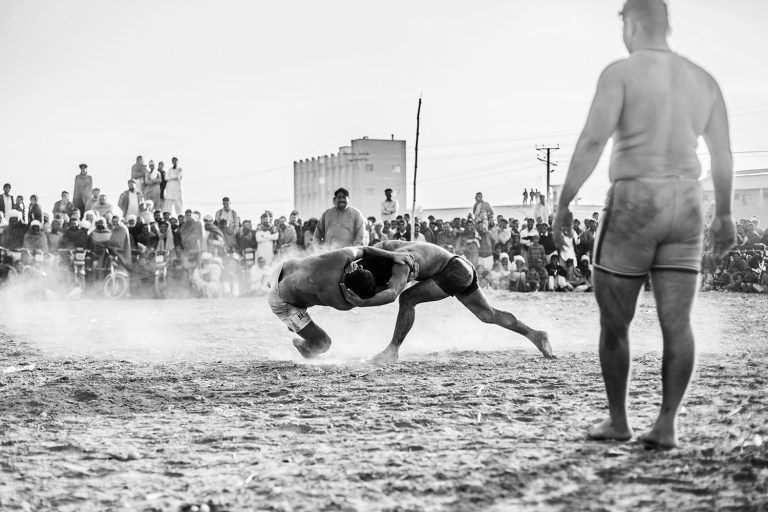
I think the borders are fluent. It’s not an either or. I like to think that I am both, a photographer and an artist. But maybe this distinction is helpful to understand that I am not a journalistic photographer per se or something like that, you know? My approach is more artistic in the sense that I am not a reporter, it is not so much about information, it is more about the composition. My ultimate goal is to create a beautiful picture – even when I’m telling a story, I want to have a great image in the end. My approach to photography is that I want to have an image later that can be on its own – that doesn’t need an explanation. You should be able to put it in a gallery. So I guess I kind of aim for a certain timeless quality, if you like. Of course it will always be historical, it will always show a person or a group of people or a city at a specific moment in time, I don’t want to get rid of that. But it should not be news, you know, like the photos you see in a newspaper article. If I get there, I am really happy. And I think there are a couple of images where I managed to do that … Photos you could put up and you could not really say, is it now, is it a hundred years ago, or is it in the future? Like an oil painting. Sometimes I like to call it ‘formal photography.’
That’s a good way to put it. I think the cover photo of your book, those two wrestlers, that definitely has that eternal quality. Maybe also because it is in black and white. So art is all about beauty, would you agree? Whereas most photos in newspaper articles are not?
Yes, as an artist you always kind of try to show something beautiful – but that can also be something ugly, you know? And it is about breaking certain conventions also. In the beginning we talked about stereotypes, clichés, and what I try to do is come up with a different view, a new one – I like to show people in a different way. So that someone seeing the photo can question such stereotypes. That’s what I try to do.
I like the photo of yourself with a machine gun, because it is both: a cliché – the terrorist stereotype of Pakistan – and not a cliché. The title is really cool: “Jesus with a Machine Gun.” You really look a bit like Jesus there. Weren’t you afraid some politically correct people would criticize you, for doing a kind of gun glorification?
I wanted to meet exactly that cliché of Pakistan that most people in the West do have. People always told me how dangerous it is without even having been there. So one by one I took pictures of me in exactly that situations that they promised me to find myself in. One was that I will be held hostage. Another one that I will be executed in the desert. The third was that I myself will become a fighting religious fundamentalist. Of course that is politically not correct – at all! But that is exactly what I wanted it to be. I am not a politician. I am an artist. I want to make the people think. Maybe – but just maybe – the people who promised me that I will be killed during my first visit or who believed I would become a fundamentalist warrior realize that their thoughts are politically not correct … to say it nicely.
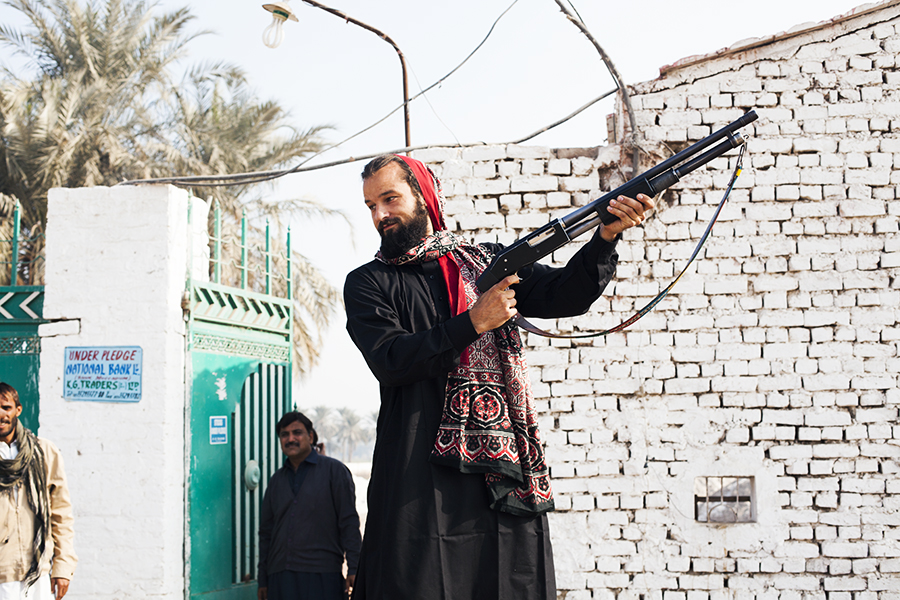
During the conversation with Bina, you mentioned that you have been an entrepreneur and you have participated in start-ups and you know how to organize events and that this helps you to do your work. In how far was that helpful in expressing your vision of Pakistan?
I think it doesn’t just help in Pakistan, it helps everywhere. I think if you not only understand the craft of photography, if you like, but also understand something about business, about other professions, that helps you to understand more about the world in general. So you can create empathy easier. But that is not just limited to my job as an entrepreneur. I have done various things in my life and … You know, I am not a learned photographer. I didn’t study it in school. Maybe this is also helpful – noone told me how you normally do it, what I have to do, or what I should not do. I guess that is why my photos are – hopefully – a bit different. Most photographers learned to do their job in a certain way. I had to find my way on my own – it just developed. I got there on my own. Of course I also looked at how other photographers do it. I picked what I liked and put it together, so something else came out.
When Bina asked you is there a similarity between Pakistan and Germany, you said that they are very far away from each other. And then you said: “Travel sheds light on what holds the world together”. So what holds it together? What holds Pakistan and Germany together?
That is a very big question of course. Let me try to answer it by referring to my personal experience. When I travel, I see all those differences – huge differences, you know, between Germany and for instance Pakistan. On all levels, cultural, political, religious. But when you actually talk to the people, you see how much a German guy from Hagen like me and someone from let’s say a small village in the North have in common. You see the connection. I cannot exactly say what this connection is, it is really hard to explain it in words – I am a photographer, not a writer. But if you think of someone like Goethe, who felt that strong connection to Hafiz and his poetry – I guess that is what I am talking about.
Some people also criticized you for your photos. I think Bina Shah did that implicitly, too, when she said that you are presenting the Western audience this exotic country that looks like it has fallen out of time. And you show the beauty of it, so we don’t see all the garbage us Karachiites are confronted with every day. But this dirt and all that misery and suffering is very much part of our culture. So why not show it? 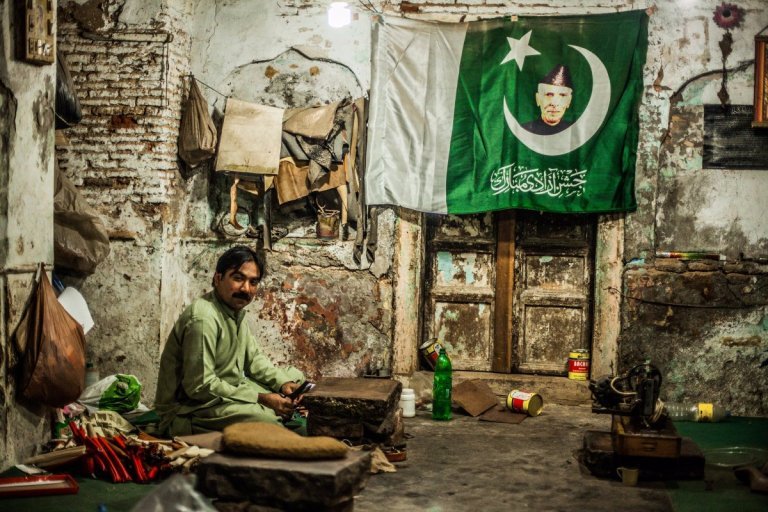
It’s part of the culture for sure, and I think you see the hardship in some of the images, but I didn’t want to make this the center of my approach. Because I think people still have – even if they’re having a hard life – they still have a lot of pride. They are proud of who they are and of what they do. I like that. I find that impressive, and also inspiring. Why should I take that away from them and portray them as miserable, suffering, pitiful creatures? It can be the ‘chai wala’ in the street – and he has this great pride, and I can see in his eyes, as long as he is doing this job, he is feeling great. This is what I want to show, that is what I am interested in. Maybe this is the connection I tried to talk about. It’s not about being rich or being poor or whatever … Maybe it’s also a typical German approach, because we don’t have these different classes, at least not this cast system that you have in India – or in England even. So I wanted to approach it the same way here. I guess I also wanted to give these people a voice … and also show that they are the caretakers of this culture. They still live this old culture, they live these traditions, it is because of them a lot of this old knowledge is still alive. Especially the handicraft knowledge. They are actually preserving your culture, but they don’t get a lot of recognition for this. I wanted to shed light on this – I think it is very important to keep this old knowledge alive, all over the world it is getting lost, but Pakistan has still a lot of that. Many places lose their identity. Many places try so hard to look like ‘the West’. They want to have skyscrapers, they want to be able to buy what they see on television, and this is also what is happening here, I can see that coming. Sometimes people ask me things like: Why don’t you show more skyscrapers? But is the skyscraper Pakistan?
Yes, it is.
No, it isn’t. If I would show you photos of some skyscrapers, you wouldn’t be able to say: This is Pakistan. It could be anywhere. And then, the skyscrapers here cannot be compared with those in, say, Dubai or New York. So why do you want to measure yourself with something that is on a completely different level? Someone recently asked me: Why didn’t you portray the nightlife scene of Pakistan? I was like: Which nightlife scene? Something like clubbing does not exist here. It all happens in private, a few very privileged people meet in closed circles. You have so much of what you can be proud of, so why don’t you highlight this? That’s what I tried to do, highlight these things I consider to be ‘true Pakistani’, if you like.
Okay, but the ‘fake Pakistan’ is also part of our reality. Just think of Malik Riaz and his ‘Icon Tower.’ You are right, it cannot compete with any skyscraper in Dubai, but that is what it tries to do.
In the second book I will also show a little more of that reality. And also the elite class here and so on, these amazingly rich people.
Rich people ‘clubbing’ …
Right. But for this one, for my first book, I wanted to focus on the resilient Pakistani and his everyday life. The typical Pakistani lifeworld.
What are your criteria for having a black and white photograph instead of a colored one?
So interestingly the whole book was supposed to be in black and white …
Why?
Because I just do a lot of black and white photography. But when I compared the black and white ones with the colored ones, very often the colored ones won. Pakistan is not just black and white, there is a lot in between. Also, these colors are part of its reality, it is a very colorful country. So I came to realize that we need colorful photographs. There’s still a couple of black and white photographs in the book …
The cover is black and white also.
Yes, but as I said – first the whole book was planned in black and white. So I found that interesting – as if the photos had told me: You can’t do that, we need to be in color.
Manolo, thank you for the interview. And keep us posted about your future work on Pakistan please.
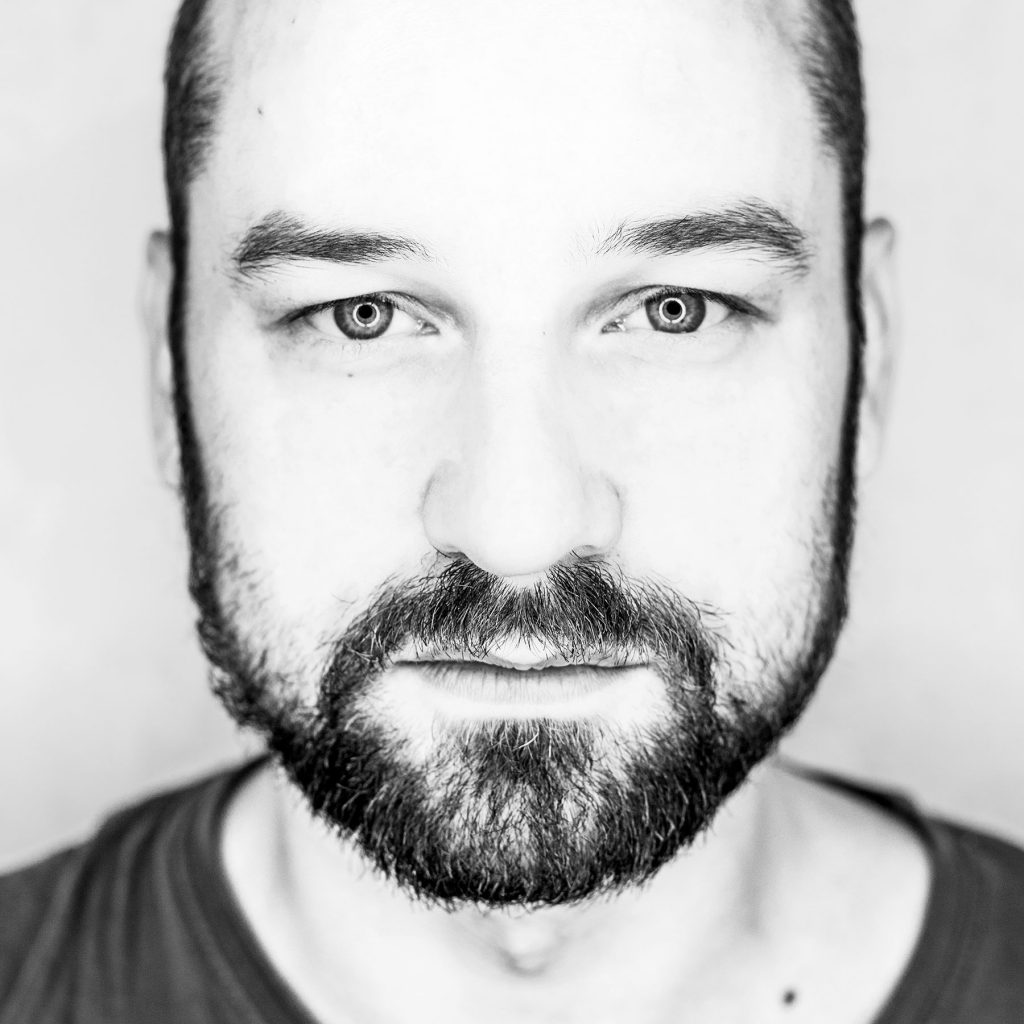
Manolo Ty
“Pakistan now”
Abid Azam
manoloty.com
German/English
276 photos, 288 pages
https://www.amazon.de/PAKISTAN-NOW